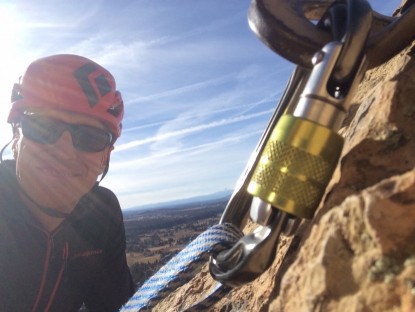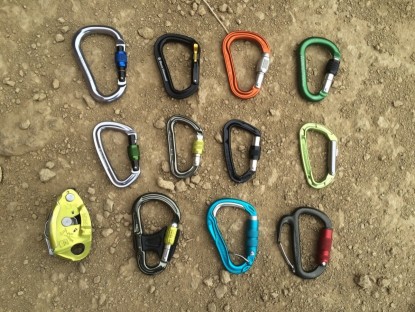Petzl updated the OK since we last tested it.
Petzl OK Review
Our Verdict
Petzl updated the OK since we last tested it.
Our Analysis and Test Results
The Updated OK vs. The Older Version
The updated Petzl OK, below at left, replaces the version of the OK we reviewed, at right. It's set to hit the market in Winter 2016/2017, according to the manufacturer, and the older OK is being phased out. The new version will be available in screw-lock (70 g), triact-lock (75 g), and ball-lock locking options (75 g). The grip on the moving part of the screw-gate now has grooves, aimed to increase the friction to make screwing the gate shut easier. The new model features an H-shaped frame, which is a design direction most Petzl locking carabiners are moving toward. Its closed gate strength increased to 25 kN, and its sideways strength dropped down to 8 kN.
Hands-On Review
Likes
This carabiner is great to use with a pulley. It makes sure the force always lines up straight down and keeps the pulley from shifting from side to side. In our tests we also found the rope runs very smoothly through it. The OK would make a great top rope anchor carabiner whether used by itself or doubled up. We love that the carabiner comes with a key-lock design. Because of its symmetrical shape, you never have to worry about the carabiner flipping around to the unwanted end when belaying. It is available with manual locking system (screw-lock) or auto-locking system (twist-lock).
Dislikes
This carabiner has poor gate clearance, which means it can be hard to get multiple knots in when used at an anchor. It is great as a towrope anchor for a single strand of rope but not ideal at belay if you want to clip multiple knots and slings to it. When rappelling the oval shape squeezes the ropes together, which adds more friction. While sometimes a good thing, in general it's better that the ropes are not squeezed together and have more space.
Best application
This is ideal for use with pulleys and a toprope anchor.
Value
This is one of the more expensive carabiners, especially for its size and lack of versatility.






